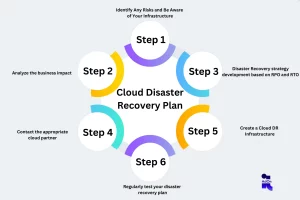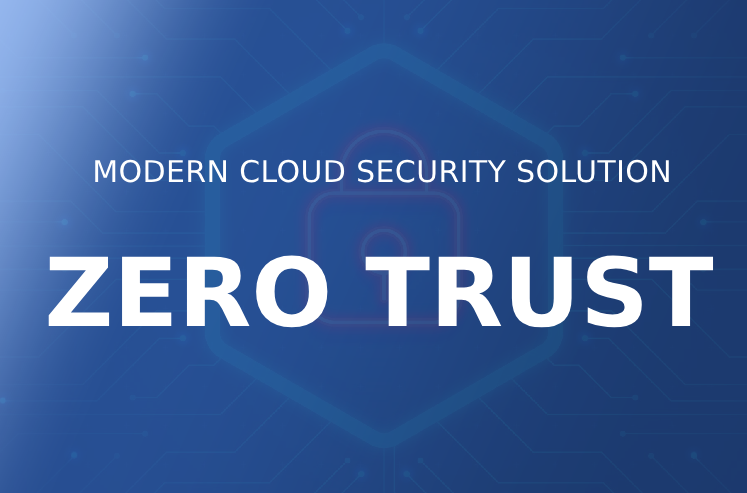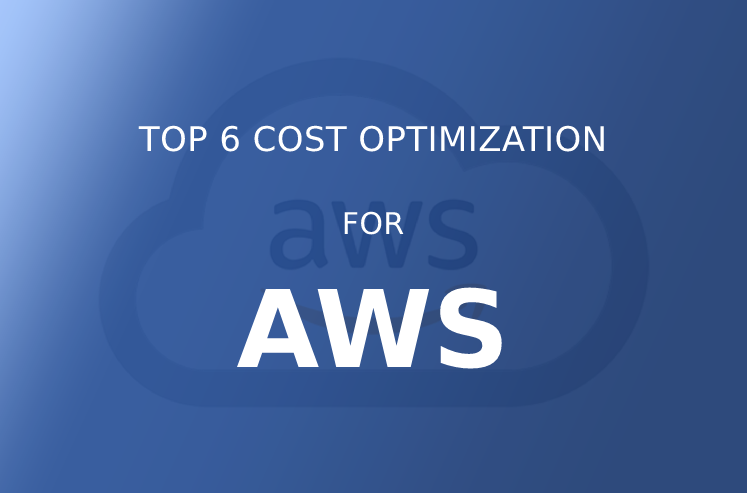The cloud has significantly improved this experience in a world where technology dominates nearly every aspect of our lives. The cloud has simplified our daily tasks, enabling us to handle complicated operational workloads and carry out extensive cloud disaster recovery plans. The cloud has made us consider how challenging it was to execute a disaster recovery plan (DR Plan) prior to its introduction, especially when it comes to managing a cloud disaster recovery.
Think about the effort and money put into a data disaster recovery strategy. You would need to consult the backup data center and the traditional disaster recovery plan if your primary data center were to have a disaster, which would need doing twice as much work and require:
Establishing a physical space and the necessary infrastructure to host your IT infrastructure including security staff and contact people in the setup. Increasing server storage capacity to meet your application’s scalability. Needs provide assistance for infrastructure upkeep enabling internet access and providing sufficient bandwidth for apps. Install network hardware, such as routers, switches, load balancers, and firewalls.
The prices and resources required for this data disaster recovery would soar, leaving the data center as nothing more than a place to store backup data.
Cloud disaster recovery has become yet another simple activity that may be completed in a few hours or minutes with the advent of cloud computing.
A cloud disaster recovery service provides businesses with a number of advantages, including:
- Saves money/time
- More options for data backup locations
- Easily Implementable and Highly Reliable
- Scalability
Here is a simple cloud disaster recovery strategy that can assist enterprises planning an efficient disaster recovery service that are thinking about cloud disaster recovery for the first time and are unsure where to start:

Step 1: Identify Any Risks and Be Aware of Your Infrastructure
It is crucial to take into account your IT infrastructure, including the possessions, tools, and data you have, in order to develop a disaster recovery strategy.
Once you’ve figured out where all of the information is stored and how much data is all worth, only then can you create an effective cloud disaster recovery strategy. You must now assess the hazards that might have an impact on everything. Natural catastrophes, data theft, and power outages are just a few examples of risks.
You are in a better position to develop your data disaster recovery strategy to remove or limit these risks now that you have an accounting of all your assets, their amounts, and any disaster threats to them.
Step 2: Analyze the business impact
The next item on the list is a business impact analysis. This can help you understand the constraints of your company’s operations in the event of a disaster, and you can take those restrictions into account while creating your cloud disaster recovery strategy.
Your evaluation of this element is aided by the following two criteria:
- Recovery Time Objective (RTO)
- RPO: Recovery Point Objective
- a) Recovery Time Objective (RTO)
RTO, in terms of cloud disaster recovery, is the length of time an application may be down without negatively affecting business operations.
Scenario 1: If your business is focused on providing services quickly, an application failure might result in significant losses.
Additionally, if you want to quickly restore corporate operations, you’ll need to make significant investments in an IT disaster recovery strategy.
Scenario 2: You can still discover other ways to conduct company operations if a calamity hits your medium-paced firm.
As a result, under your DR strategy, you can set your RTO for a maximum of one week. You won’t need to devote a lot of resources to data disaster recovery in this situation, giving you plenty of time to gather enough disaster recovery cloud solution resources once the crisis occurs.
It is crucial to understand your RTO since it corresponds to the amount of resources you must devote to your disaster recovery plan. This is because the time lost during the RTO may be utilized to assemble backup resources.
- b) Recovery Point Objective (RPO)
RPO is the longest period of time you are willing to tolerate experiencing significant application data loss.
Points to consider for determining RPO:
- When a disaster occurs, there may be data loss
- Before the data breach, there might be a time loss
If the aforementioned situation is used, your RPO might be as low as five minutes because your firm is crucial and cannot afford to lose more time than the allotted amount of time.
In contrast, in Scenario 2, you could wish to back up your data, but since it is not time-sensitive, you won’t need to make a significant investment in cloud disaster recovery tools.
Step 3: Disaster Recovery strategy development based on RPO and RTO
You may now concentrate on building a solution to achieve the objectives of your IT Disaster Recovery strategy after determining your RPO and RTO.
To implement your IT disaster recovery strategy, pick from the variety of disaster recovery options listed below:
- Restore and Backup
- Approach with Pilot Light
- Cold Standby
- Complete cloud replication
- Multi-Cloud Option
You can use a combination of these approaches to your benefit or exclusively as per your business requirement.
Step 4: Contact the appropriate cloud partner
Finding a reputable cloud service provider to assist with the deployment should come after you have thought about developing a cloud disaster recovery strategy.
The following criteria should be taken into account when choosing a suitable cloud provider if you intend to employ complete replication in the cloud:
- Reliability
- Rapidity of Recover
- Usability
- Ease of Setup and Recover
- Scalability
- Complying with Security
Cloud disaster recovery options are offered by all of the major cloud service providers, including AWS, Microsoft Azure, Google Cloud, and IBM. In addition to these large corporations, there are medium-sized and smaller businesses that provide top-notch Disaster Recovery as a Service (DRaaS).
Step 5: Create a Cloud DR Infrastructure
You may work with the provider to put your design into practice and build up your disaster recovery strategy after contacting a cloud disaster recovery service partner.
There are numerous logistical elements to take into account depending on the disaster recovery tactics you choose:
- How many different infrastructure parts will you need?
- How will the data be copied to the cloud?
- How should user authentication and access management be approached?
- What best practices for security and compliance will you need to implement?
- What safety precautions will you take to lessen the chance of disasters?
Remember! For efficient company operations, it is essential to make sure your DR strategy is in line with your RTO and RPO requirements.
Step 6: Regularly test your disaster recovery plan
The next step would be to test your IT discovery recovery strategy more frequently now that your cloud disaster recovery plan is written down. This aids in making sure there are no gaps.
The DR plan could appear to be the most thorough one when put on paper, but testing is the only way to determine its veracity.
Your first exam might not go as well as you anticipated, and it might even turn out worse. However, you will eventually gather knowledge from these mistakes and improve your disaster recovery as a service to better prepare your infrastructure for prospective calamities.
It is crucial to test your disaster recovery strategy as it grows in size. In terms of how frequently you should do your testing, it is advised that you do so every three months.
You may check on and evaluate the performance of your backup system every day or every week in the interim.
There will always be changes in the people, the processes, and the technology that your firm uses. It’s a good idea to test your cloud disaster recovery solutions during these modifications to make sure the company is always prepared for an emergency.
Conclusion
Your company is kept safer by having a thorough understanding of the best practices used in the sector. Have you chosen your cloud computing platform? Searching for a reliable DRaaS supplier? Get in touch with ITAdOn to understand the various disaster recovery strategies and identify the one that suits your business requirement!






